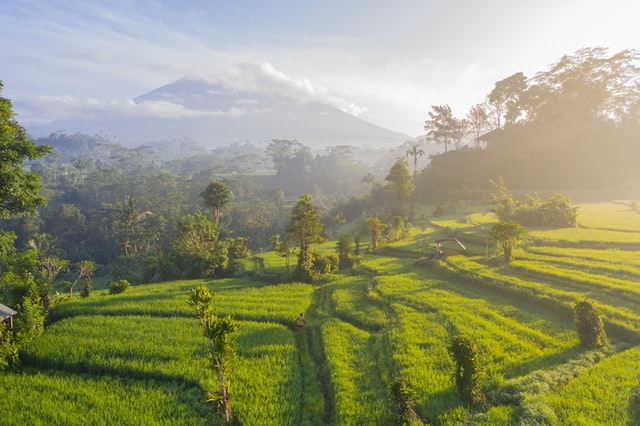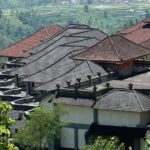Ubud, Bali: Where Art Meets Worship

Bali, Indonesia was the first time we plunged down the equator. We arrived on a stormy day in Bali and for lack of better things to do, we stood peering at the sink to see if water swirled in the counter-clockwise direction in areas below the equator. To my bewilderment, the water seemed to be going only in one direction–down.
After one whole day of lazing around in the resort at Kuta Beach, we decided we could not spend all of our time in Bali waiting for the storm to blow over. So we hired a car for a day and marked out the places we wanted to go to. We would get in the car after breakfast and get back to the hotel by nighttime. My then one-year-old seemed to be thriving in this nomadic life, and I wondered whether we should sell our house and live in an RV for his sake.
One of our trips while in Bali was to Ubud, Wenara Aana and the rolling paddy fields of Tegalalang. Ubud, Bali seems to be where art and entrepreneurship thrives. Along with beautiful temples that are filled with amazing sculptures, Ubud is also home to the 21st century nomadic entrepreneur. In Ubud, we found many co-working spaces and start ups that house people from all over the world. Working in the lap of nature must be a reward in itself for these go getters.
Working in the lap of nature must be a reward in itself for these go getters.
Ubud is also home to beautiful wood cravings, glass work and exquisite furniture that is shipped all over the world. In fact, we stumbled upon a small cottage industry of wind chime makers in Ubud that had Jamaica written on the chimes and would be sold as souvenirs for tourists who visit Jamaica. This is what globalization has led to–souvenirs for one part of the world being manufactured in another.
Ubud and Bali also offers some great batik prints and batik sarongs. We also visited a showroom that sold some exquisite designs in silver that were truly intricate. Wood carvings and other such art forms are dying art forms as youngsters look for other glamorous job prospects and move to the cities. There is a distinct hierarchy that is followed in the workshops where these crafts are still practiced and the quality of the work can also be distinguished between master, expert and apprentice. We were lucky to witness this art in the making.
Another noteworthy temple to visit is Wenara Wana which translates to monkey forest. The temple is dedicated to the monkey God and is a haven for mischievous monkeys. This is a sanctuary for monkeys and contrary to what businesses selling food for the monkeys say, it is better to go inside without any food items or bags. The temple is surrounded by thick trees and a sparkling stream. The entire place gives the aura of being at peace with itself. There are certain rules to be followed while visiting temples in Bali–from wearing a sarong that can be rented to not entering certain temples with young children.
This is what globalization has led to–souvenirs for one part of the world being manufactured in another.
Our last stop for the day was Tegalalang, which is home to step terraces of paddy fields. Some of the farmers make an extra buck by posing for pictures or taking visitors on tours through the paddy fields. We chose to stand at the edge of the fields and admire the young green of paddy and the versatile artwork that had blessed this small island.
In Ubud, Bali, it truly seems as though every temple and stone has been touched and uniquely crafted by thoughtful hands.
Photo by Unsplash.









Good read and an interesting one…